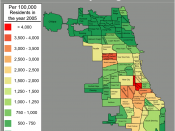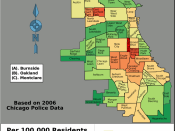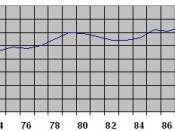The cost of crime is a difficult calculation to arrive at. Not only does crime cost the victim, but also society as a whole. Many of the costs can be estimated using monetary values based on the crime directly. Other costs however are not as easy to measure in dollar values. The social cost of crime to society and the victim go much further than the crime itself, but all of the repercussions due to the crime make up a large portion of its cost.
In 1996 the U.S. Department of Justice released a report that the cost of crime victimizations added up to $105 billion annually. This calculation included tangible losses such as property and productivity losses as well as medical expenses due to the crime. That would amount to a tax of $425 per person in the United States because of crime. Also other costs must be added as well to that figure to gain a real account of the cost.
This is not an easy figure to determine, but such costs, intangible costs, add up to quite a lot of money as well. When values for intangible costs such as pain, trauma, disability, and the risk of death are measured into dollars, the costs are much higher at $450 annually. That would work out to $1800 per person in the United States. That may seem like an incredible amount and it is. The social cost of crime is large figure that goes well beyond the monetary values that can be calculated, but using a monetary value that people can see and compare helps people to understand. Dollar values are something that people can recognize without getting to deep into the real social cost of crime. ("The Extent,"� 1996).
One area of crime in which it is...


